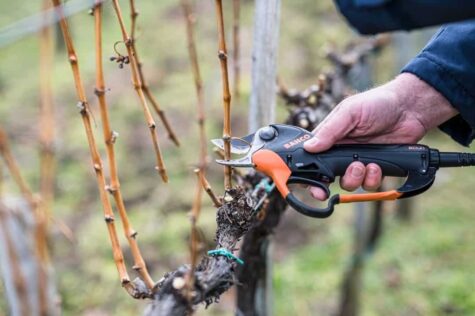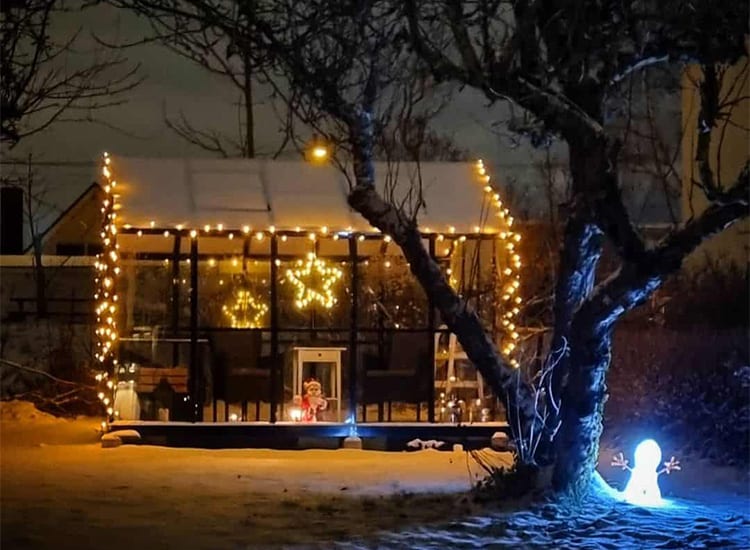Would you like to brighten up your dull winter garden? Luckily there are some plants that prefer to flower in winter. By planting winter bloomers, you should be able to create a vivid winter garden in no time.
If you’re not sure which plants flower in winter, take a look at the list below. Here I’ve put together a few plants that do well in harsh winters and will reward you with beautiful winter flowers.
When to plant winter flowers
The best time to plant winter flowering plants will depend completely on the type of plant. Some winter bloomers need to be planted in summer or even autumn while others can be planted at any time of the year. Make sure to do your research on your specific winter plants before buying them.
Plants that flower in winter
1. Pansies

By Colin Smith, CC BY-SA 2.0 via Wiki
Winter pansies are a great way to liven up a winter garden. The best time to plant them is in autumn, giving them time to establish themselves before the cold winter hits. These flowers can survive snow and will flower throughout the coldest months of the year.
Make sure to plant them in well-drained soil, feed them often with a balanced fertiliser and plant them where they have full or partial access to sunlight. Much like sunflowers, these beauties tend to follow the sun so make sure to plant them in a way that the sun is behind you.
2. Winter honeysuckle

Winter Honeysuckle Flowers by bobistraveling
This honeysuckle might not be the prettiest plant out there, but nobody can say it doesn’t make up for that in fragrance. The best time to plant this shrub is in late winter or early spring. This gives it some time to grow before the next flowering season.
Make sure the soil drains well, but still retains some moisture for this plant. Fertilise with a balanced, all-purpose fertiliser and plant in an area that gets full sun or partial shade for the best results. Winter honeysuckle will also lure bees and birds to your garden.
3. Snowdrops

By Bernard DUPONT from FRANCE – Common Snowdrops (Galanthus nivalis), CC BY-SA 2.0
Snowdrops are a very hardy perennial that is known to flower even in snow, hence the name. If you want to plant snowdrops with foliage already visible, the best time to do it is in late winter or early spring. If you’re planning on planting dry bulbs, the best planting time is in mid to late autumn.
Snowdrops prefer to grow in moist, well-drained soil. Make sure to add lots of humus to the soil as well as some gravel or sand to improve drainage. Plant these pretty perennials in an area with dappled shade for the best flowering display.
4. Winter clematis

Winter flowering Clematis by PapaPiper
Winter flowering clematis has bell-shaped flowers that sometimes have spots in them. This plant is best viewed from below, which makes them ideal for hanging baskets.
Make sure to keep winter clematis in a sheltered area with lots of winter sunshine for the best results. The winter sun will promote earlier flowering. Normally, the flowers will appear in late autumn or early winter.
The best time to plant clematis is in early autumn. They will live for several seasons if well cared for. Sometimes these plants appear to have died in summer but return with vigour once it cools down so don’t be too hasty to replace them.
5. Winter jasmine

Snow on Winter Jasmine by L’eau Bleue
Winter jasmine is very easy to care for and generally does pretty well on its own once established. These plants flower over an extended period of time, brightening up your winter garden. The best time to plant winter jasmine is in spring. This gives the plant enough time to establish itself to a point where it will flower over the coming winter.
Plant winter jasmine in an area with partial sun and protection against wind. There is no specific soil preference, just make sure the soil is fertile. If planted in nutrient-poor soil, you’ll need to use fertiliser.
6. Flowering heather

Credit: Pixabay
Flowering heather is a bee-friendly, evergreen shrub. There are many varieties with different flowers for every season. Winter flowering heather needs to be planted in spring or autumn.
Flowering heather needs to be planted in humus-rich, well-drained soil. For more vibrant flowers, plant this shrub in an area with lots of sunshine. Some varieties do very well in the cold, while others can tolerate more heat and even some salt spray in coastal areas. Make sure to choose the variety that suits your needs.
7. Mahonia

By Tony Hisgett from Birmingham, UK – Yellow Mahonia. Uploaded by Magnus Manske, CC BY 2.0, via Wiki
Mahonia is an evergreen shrub that flowers in winter and early spring. It’s best to plant this shrub in a sheltered area with full or partial sun. It prefers moist, well-drained soil to stay healthy. The best time to plant this shrub is in late winter or early spring as well as late autumn.
Mahonia produces beautiful yellow spires that will brighten up any winter garden. You can use this plant to create garden borders and to fill up those tricky areas that other plants refuse to grow in. Just make sure it gets enough sunlight to flower.
8. Winter aconite

By Kora27 – Own work, CC BY-SA 4.0, via Wiki
Winter aconite is a perennial that will flower at the earliest possible time. It produces small yellow flowers that will start to brighten up your garden in late winter or early spring. This plant doesn’t mind a little snow and will often push its blooms through the icy cover.
The best time to plant these flowering perennials is in late autumn. Plant your initial tubers in fertile, well-drained soil and watch them spread every year.
9. Daffodils

Credit: Pixabay
Daffodils are bright specks of colour in any garden. They will start to flower early in spring, even if there is some snow left on the ground.
The best time to plant daffodils is in late summer or early autumn for an early flower display. They prefer to be planted in well-drained soil. Make sure the area gets full sun in spring to enjoy the best colour display. They can also be planted in partial shade, but won’t produce that many flowers.
10. Cyclamen

By Dominicus Johannes Bergsma – Own work, CC BY-SA 4.0, via Wiki
Cyclamen are beautiful flowering perennials for a winter garden. Make sure to research your chosen variety before you get it. Some varieties are hardier than others and also have different care guidelines. To avoid disappointment, make sure you know what you’ll be dealing with.
Most of these plants prefer well-drained soil in an area with partial shade. Different varieties flower at different times, so make sure to choose a winter flowering type for your garden.
For the best results, plant your cyclamen in autumn, winter or early spring. This plant, depending on the variety, will flower almost year-round starting in mid-winter.
11. Hellebores

Credit: Pixabay
Hellebores are flowering perennials that will lighten up any winter garden. They usually flower from late autumn and throughout winter until spring arrives. They are very tough plants and will survive just fine in snow. Make sure to protect them against extreme frost, however.
Different varieties of hellebore will flower at different times of the year. Christmas rose hellebores for instance flower from late autumn until late winter while lenten hellebores flower from late winter until the end of spring.
These plants are usually bought in flower and can be planted anytime from autumn until spring. Make sure to pick an area with moist, well-drained soil and partial shade for the best results.
12. Daphne

By Miya, CC BY-SA 3.0 , via Wiki
Daphnes are attractive shrubs that usually flower in late winter and early spring.
This shrub can be planted at any time of the year as long as the ground isn’t frozen. Choose an area with partial shade or full sun for the best flower display. If planted in full shade, very few if any flowers will form. The soil should also be free draining with a lot of compost mixed in.
The daphne can be quite difficult to care for, so make sure to do your research beforehand.
FAQs
What kind of flowers bloom in winter?
Plants that bloom in winter are those that prefer colder weather over the heat of summer. These flowers include pansies, snowdrops, daphne, mahonia and more.
What can I plant now for winter flowering?
The best time to plant winter flowers depends on the plant itself. To ensure winter flowers, research the specific plant. Try looking up daphnes, hellebores, pansies and winter jasmine.
What plants can survive winter outside?
All plants mentioned in the list above do just fine outside during winter. They even need the cold to flower. Here’s a quick summary:
- Winter aconite
- Cyclamen
- Mahonia
- Flowering heather
- Winter clematis
- Snowdrops
- Winter honeysuckle
What perennials bloom in winter?
You’ll be surprised to find that quite a few perennials prefer to flower in winter. Here are a few to take note of:
- Hellebore
- Cyclamen
- Winter aconite
- Snowdrops
If you are interested in more winter gardening check out or top vegetables to grow in the winter and the best plants for wonderful winter colours.







